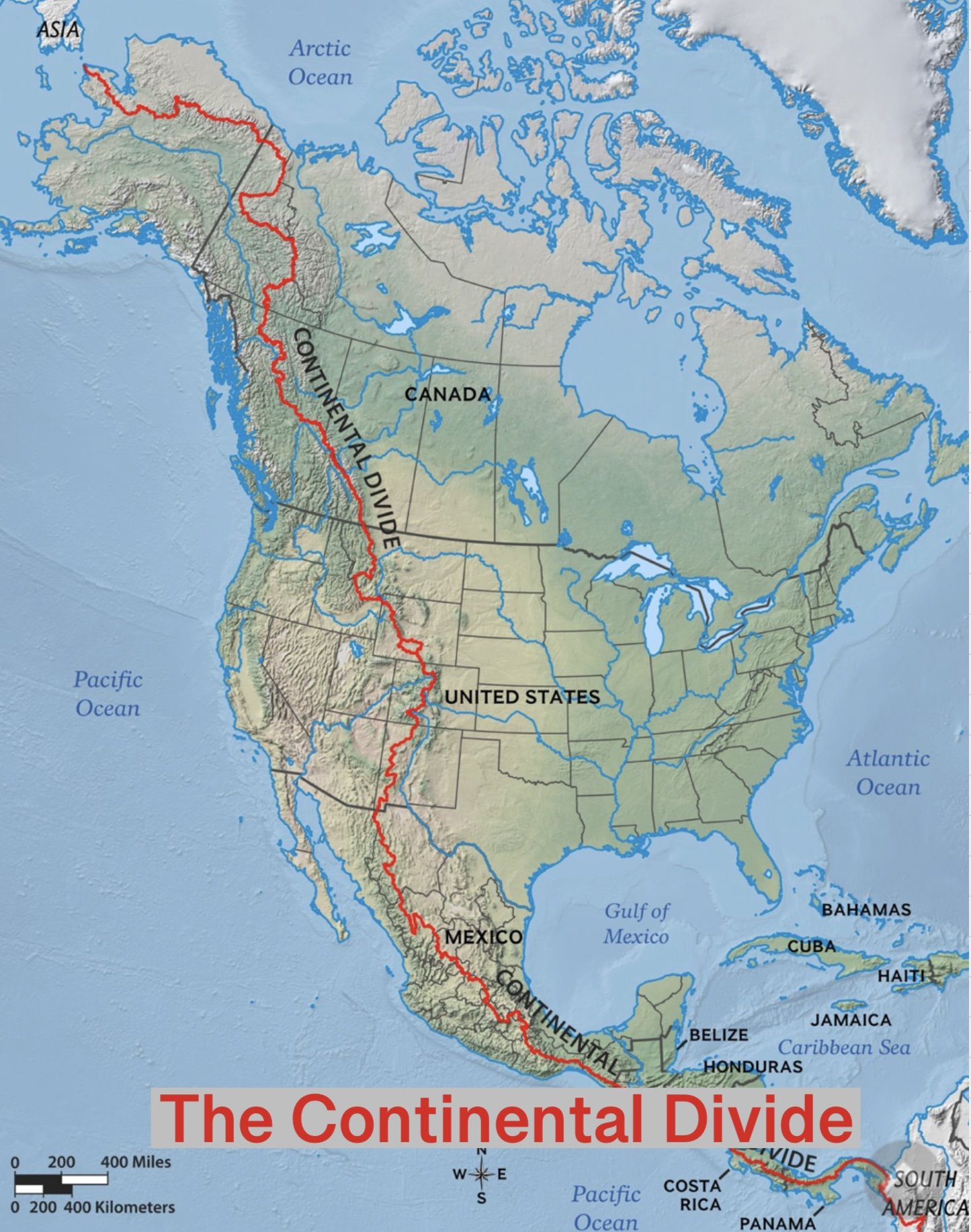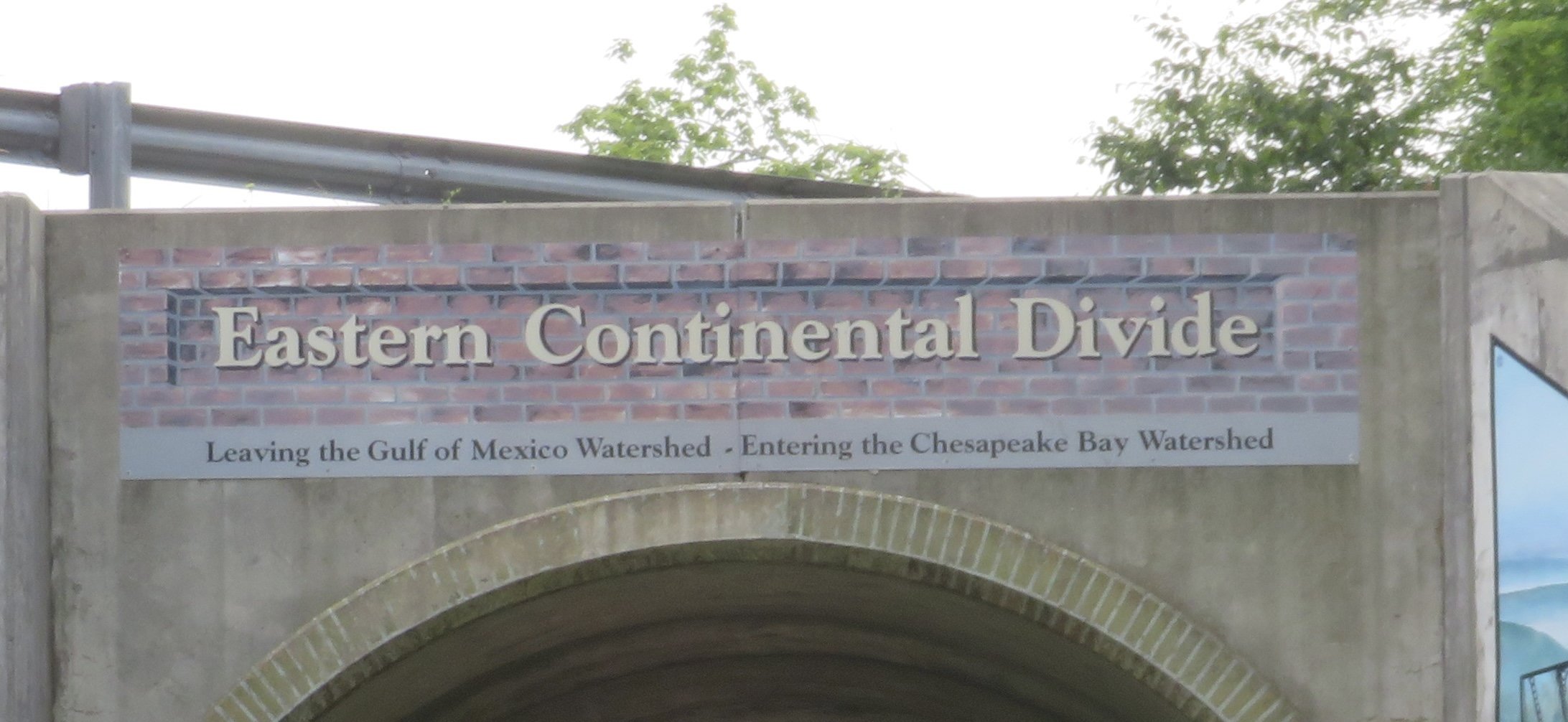Blue View - How Many Continental Divides Are There?
/I grew up in Colorado, and where I lived, it was about an hour’s drive to the Continental Divide. This, as Mrs. Menard taught me in the 3rd grade, is the imaginary line that separates the Atlantic watershed from the Pacific watershed. A raindrop that falls, or a river that flows west of the divide will eventually make its way to the Pacific, while water east of the divide will ultimately flow into the Atlantic.
The Continental Divide runs from the southern tip of Patagonia to northern Alaska. In the lower forty-eight of the U.S., it starts in New Mexico at the the border with Mexico, passes through Colorado and Wyoming, then follows the Idaho - Montana border for awhile before turning north into Montana to the Canadian border. In our travels, we must have crossed it more than a hundred times in the U.S., and Marcie and I have also crossed it in Ecuador, Peru and Chile. We know it well.
Thus, it came as a surprise when Marcie mentioned that she saw a sign stating we’d just crossed the Continental Divide as we were driving along the Great Northern Route through North Dakota. “Naw, it couldn’t have been”, I said. “We crossed the divide several hundred miles back in Montana”. She was adamant, however, so we made a u-turn and drove back to investigate. Sure enough, there it was… a sign that said “Continental Divide - Elevation 2210 Feet”. How could this be? Certainly, Mrs. Menard, my favorite teacher of all time, couldn’t have been wrong! There couldn’t be more than one Continental Divide could there?
After researching the topic, I was amazed to learn that there are actually five Continental Divides in the U.S. and another one in Canada. The divide I learned about from Mrs. Menard is technically the Great Divide, while the divide we crossed in North Dakota is called the Laurentian Divide, which separates the Hudson Bay-Arctic Ocean watershed from the Atlantic watershed. Since the Arctic Ocean touches both the Atlantic and Pacific Oceans, then, strictly speaking, only the water east of the Great Continental Divide and south of the Laurentian Divide flows into the Atlantic.
There are also some secondary divides in the U.S. One, the St. Lawrence Divide separates the watershed that flows into the Great Lakes and St. Lawrence River from the watershed that flows into the Atlantic and Gulf of Mexico. We crossed this divide twice as we traveled the Great Northern Route.
Then there is the Eastern Divide that separates the Atlantic watershed from the Gulf of Mexico watershed, and which, for the most part, follows the Appalachian Mountains. While one might think that by now, we’d be rather blasé about crossing yet another Continental Divide - and only a secondary divide at that, this divide was special. We crossed this one on our bikes, and it took two days of uphill pedaling to reach it. It marked the high point of the Great Allegheny Passage, and once we crossed it, the trail would be essentially downhill all the way to D.C.
There are a few more exceptions to the “everything east of the Great Divide flows into the Atlantic and everything west…” rule, the biggest of which is the Great Basin Divide. All rain that falls into the Great Basin region as well as any river that flows into it, evaporates, sinks into the ground or flows into lakes. There is no water outlet to the Pacific from the Great Basin. Technically, then, not all the rivers on the west side of the Great Continental Divide do flow into the Pacific.
A little more trivia:
The point at which the Great Divide and the Laurentian Divide meet is at the top of Triple Divide Peak in Glacier National Park. It’s the only place in the world where a drop of falling rain could eventually flow into one of three oceans.
Grays Peak, in Colorado, is the highest point on any of the Continental Divides in North America at 14,352 feet. Marcie and I, along with our three kids climbed Grays Peak… 30-some years ago when we were trying to bag all 54 of Colorado’s 14ers.
Several lakes straddle the Great Divide, with the east side sourcing a stream that eventually flows into the Atlantic while the west side sources a stream to the Pacific. One example is Isla Lake in Wyoming.
North Two Ocean Creek flows along the Great Divide in Wyoming, then forks with one fork flowing west to the Pacific and the other fork flowing to the Atlantic.
Lake Gatun, the man-made lake that forms part of the Panama Canal, drains into both the Atlantic and Pacific Oceans.
Finally, Canada’s Alpine Club has a hut that sits directly astride the Great Divide. Rain that falls on the roof on the east side of the hut flows via Lake Louise into Hudson Bay, while rain falling on the west side of the hut flows into the Pacific.
See you next week…








